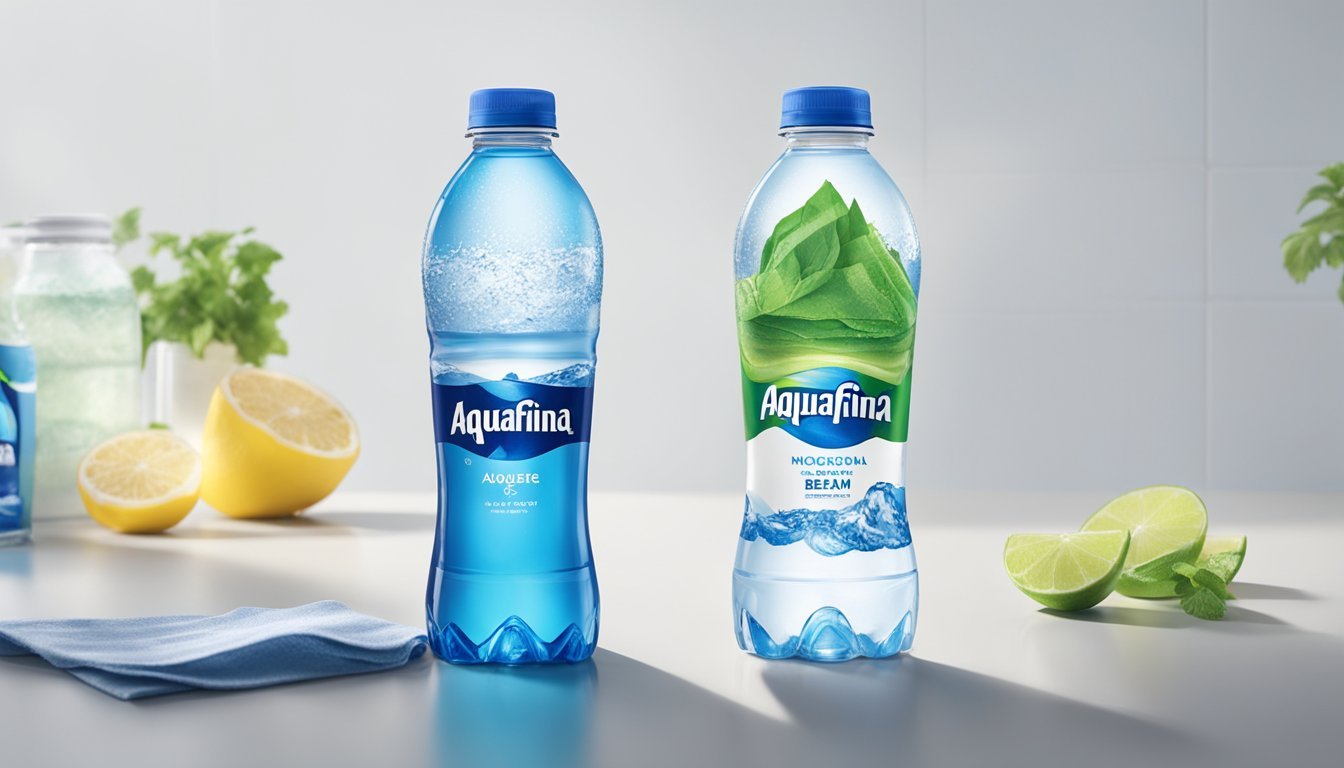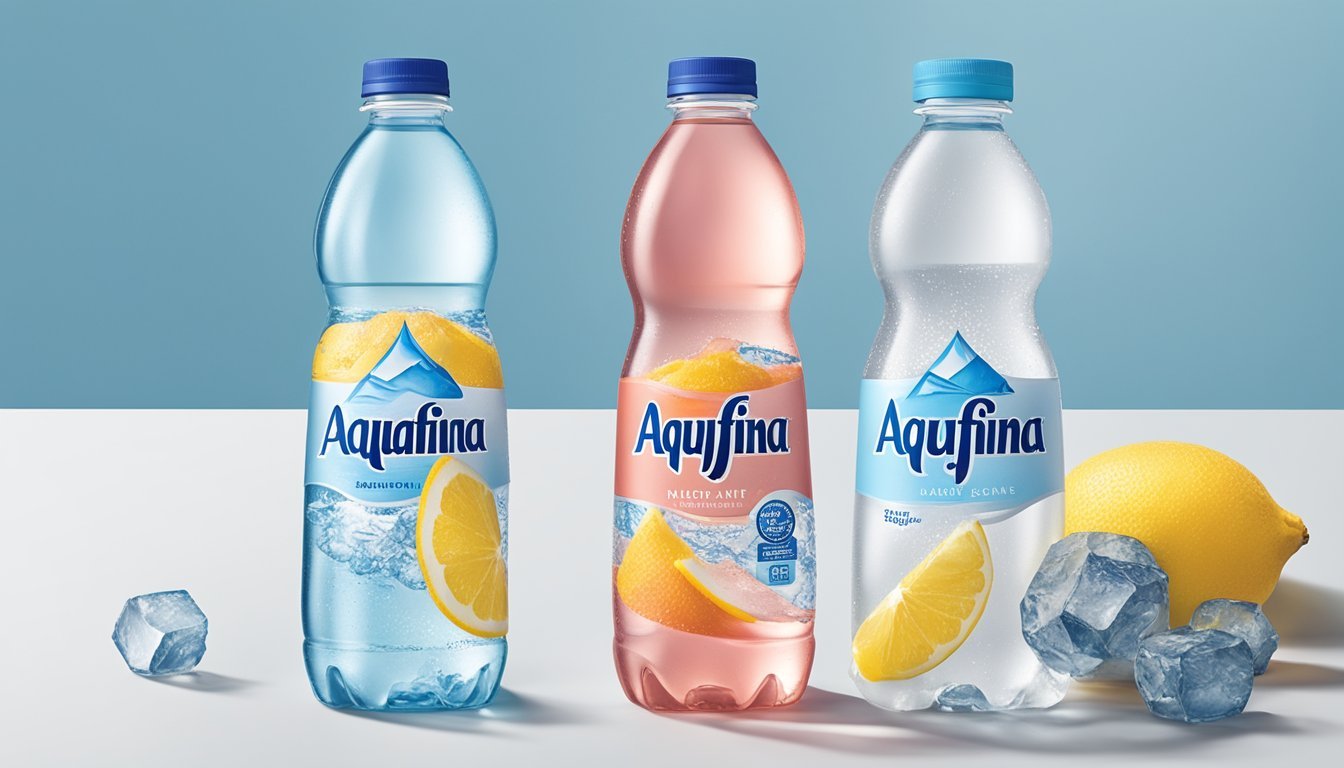Aquafina vs. Kroger
Unveiling the Superior Bottled Water Choice
Choosing the right bottled water can be a daunting task, given the plethora of brands available. Among the many options, Aquafina and Kroger bottled water often stand out as popular choices for hydration. Each brand claims to offer pure, refreshing water, but consumers are curious about which truly stands above the other.
Aquafina, known for its reliability and widespread availability, is a product of PepsiCo, designed to provide clean and crisp hydration. On the other hand, Kroger bottled water, available in the famous grocery chain, promises affordability and accessibility. When comparing these two, many consumers find Aquafina to offer a slightly superior taste and cleaner finish.
Nonetheless, Kroger bottled water holds its own with a loyal customer base appreciating its practicality and lower cost, making it a go-to option for everyday hydration needs. Understanding these subtle differences can guide you in making an informed choice between Aquafina and Kroger for your next bottled water purchase.
The Basics of Bottled Water
Bottled water comes in various forms, each meeting specific health and safety standards. The type of water, the purification process, and the environmental impact of packaging are crucial elements for consumers.
Defining Purified Water
Purified water undergoes processing to remove contaminants, ensuring it is safe to drink. Common methods include reverse osmosis and distillation. These techniques eliminate impurities such as lead, arsenic, and bacteria. Brands like Aquafina employ reverse osmosis to guarantee purity. Essential minerals may be reintroduced after purification to enhance taste. Purified water differs from spring water, which is naturally sourced and filtered to meet potable standards. Consumers often choose purified water for its consistent quality and safety.
Health and Safety Standards
Both the FDA and EPA set stringent guidelines to ensure bottled water safety. FDA regulations mandate regular testing for contaminants like lead, arsenic, and bacteria. The presence of microplastics and BPA in packaging is also closely monitored. Brands such as Kroger comply with these regulations, ensuring their water is safe for consumption. Additionally, the water must contain a certain level of essential minerals and electrolytes. Fluoride, known for its dental benefits, may be included in some bottled water but is generally absent from purified varieties.
Environmental Impact
The environmental impact of bottled water is a significant concern. The production and disposal of plastic bottles contribute to pollution. eco-friendly alternatives include biodegradable and reusable bottles. Brands are increasingly adopting environmentally friendly practices, such as using recycled materials and reducing plastic use. Consumers are encouraged to recycle to mitigate waste. The overall carbon footprint of bottled water production, transportation, and disposal is substantial, leading to a push for more sustainable solutions in the industry. Choosing eco-friendly options can help reduce the environmental burden.
Comparative Analysis of Aquafina and Kroger Brand Water
This analysis examines the differences between Aquafina and Kroger brand bottled water by looking at their sources, purification processes, taste, pH levels, and nutrient content.
Source and Purification Process
Aquafina sources its water from public water supplies and uses a rigorous purification system called HydRO-7. This process involves reverse osmosis, UV light treatment, and ozonation to ensure the water is free of impurities.
Kroger also starts with municipal water sources, which undergo a similar purification process. They employ reverse osmosis and additional filtration steps to make the water pure.
Both brands emphasize using advanced filtration techniques to provide clean and safe drinking water, but Aquafina's use of the HydRO-7 process is particularly noteworthy.
Taste and pH Level Assessment
Aquafina is noted for its crisp, clean taste. The extensive purification process removes dissolved solids that can affect flavor, resulting in a neutral taste profile. Aquafina’s pH level typically falls around 5.5, which is slightly acidic.
Kroger's bottled water also boasts a clean taste but is perceived as slightly more mineralized due to less rigorous filtration. Kroger’s pH level usually ranges between 6.5 and 7.5, making it closer to neutral or slightly alkaline.
Taste preferences can vary significantly; some may prefer Aquafina's purer, crisper taste, while others find Kroger’s slight mineral presence more appealing. The pH level differences may also play a role in individual preferences.
Nutrients and Mineral Content
Aquafina contains minimal amounts of minerals due to its rigorous purification process. This makes it a choice for those who prefer low-mineral content water or individuals who need to restrict mineral intake.
Kroger’s water retains some natural minerals, providing a subtle but distinct taste. Electrolytes and minerals, including small quantities of sodium and potassium, are present, although these levels are not high enough to significantly impact daily intake.
Consumers looking for water with some degree of mineral content might lean towards Kroger's product, while those who prefer virtually mineral-free options might favor Aquafina.
Both brands offer high-quality bottled water, but the choice often comes down to personal taste preferences and specific dietary needs.
Water Brand Alternatives and Comparisons
Aquafina and Kroger are popular bottled water choices, but exploring alternatives can offer insights into other brands, enhanced water varieties, and natural spring options available on the market.
Premium Brands Overview
Premium bottled water brands often emphasize quality and unique sourcing. Evian sources its water from the French Alps, providing a mineral-rich profile. Fiji offers artesian water from Viti Levu in Fiji, known for its silica content which adds a smooth texture. Voss, sourced from Norway, is marketed for its purity and minimalist design.
These brands typically come at a higher price point, positioning themselves as luxury products. Consumers are paying for both the aesthetic and the perceived health benefits of naturally sourced waters.
Enhanced Water Varieties
Enhanced waters infused with minerals, electrolytes, or pH balancing elements cater to those seeking more than hydration. Smartwater and Essentia focus on electrolyte enhancement, promoting quicker recovery post-exercise. Core Hydration and Life WTR emphasize balanced pH and added minerals. Propel Fitness Water, fortified with vitamins and antioxidants, is aimed at active lifestyles.
These options appeal to health-conscious consumers looking for functional beverages that support their wellness goals beyond basic hydration.
Natural and Spring Water Options
Natural and spring waters highlight their sourcing as a primary selling point. Poland Spring sources from multiple springs in Maine, USA, ensuring a consistent taste profile. Mountain Valley Spring Water offers premium spring water from the Ouachita Mountains in Arkansas. Icelandic Glacial, from Iceland, emphasizes its naturally low mineral content and high purity.
Nestlé Pure Life and Deer Park, both under the Nestlé umbrella, are widely available and offer reliable, affordable spring water options. Dasani, although purified rather than spring water, remains a significant player in providing consistent quality for general consumption.
Consumer Considerations for Buying Bottled Water
When choosing bottled water, many factors come into play including the price and accessibility of the brands, health-conscious options, and the environmental impact of the bottles used.
Price and Accessibility
Aquafina and Kroger bottled water are widely available at a variety of retailers, ensuring easy access for most consumers. Aquafina, a product of PepsiCo, is often priced slightly higher due to its brand recognition and marketing. Kroger, being a store brand, is typically more budget-friendly.
Here's a quick price comparison:
Brand Average Price (per gallon) Aquafina $1.00 - $1.50 Kroger $0.70 - $1.20
In terms of accessibility, both brands offer multipacks and individual bottles, catering to various consumer needs.
Health Conscious Choices
Consumers increasingly seek bottled water options that align with their health goals. Both Aquafina and Kroger adhere to FDA standards, ensuring safety and quality.
Aquafina goes through a rigorous purification process, ensuring a clean, crisp taste. It often does not contain added minerals or electrolytes, which some health-conscious individuals might prefer.
Kroger offers a range of bottled water products, including options with added minerals and electrolytes that can aid in maintaining hydration and balancing bodily fluids, essential for active lifestyles.
Environmental Concerns
The environmental impact of bottled water is significant and a growing concern for many consumers. Both Kroger and Aquafina bottles are made from plastic, which contributes to pollution and waste.
Aquafina has initiatives to reduce plastic usage and increase recycling efforts, making strides toward being more eco-friendly. Kroger also offers BPA-free packaging, addressing some of the health and environmental concerns associated with plastic bottles.
Consumers are encouraged to recycle and, when possible, opt for reusable water bottles to minimize their carbon footprint.
Choosing between Kroger and Aquafina ultimately depends on individual priorities regarding cost, health benefits, and environmental impact.
The Bottom Line on Bottled Water
When choosing bottled water, both Aquafina and Kroger offer products that adhere to FDA regulations. This ensures baseline safety and quality.
Aquafina is known for its purification process, which includes reverse osmosis and other filtering techniques. This results in a clean and consistent taste.
Kroger, on the other hand, has a reputation for meeting safety standards, though concerns about possible contaminants like microplastics and BPA are noted. Many bottles are now BPA-free, which is a positive stride.
A key factor to consider is the source of the water. Many bottled waters, including a significant portion sold in the U.S., are essentially filtered tap water. This finding comes from studies indicating that nearly 64% of bottled water originates from municipal sources.
Environmental impact is another critical issue. The production and disposal of plastic bottles contribute to pollution and waste. Opting for brands that use recyclable materials or supporting initiatives aimed at reducing plastic waste can help mitigate these effects.
From a taste perspective, Aquafina is praised for its reliability and lack of off-flavors, whereas Kroger might have mixed reviews. Each person’s preference will vary, making it essential to try both and determine which aligns with personal preference.



